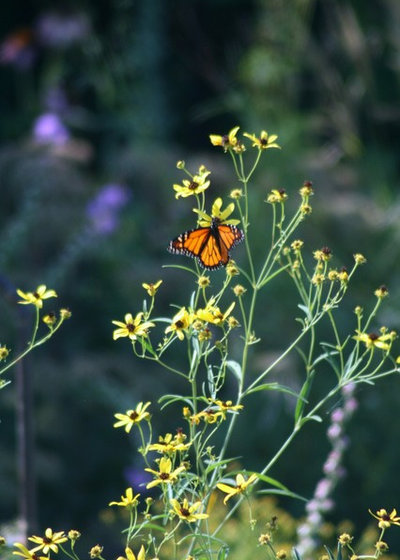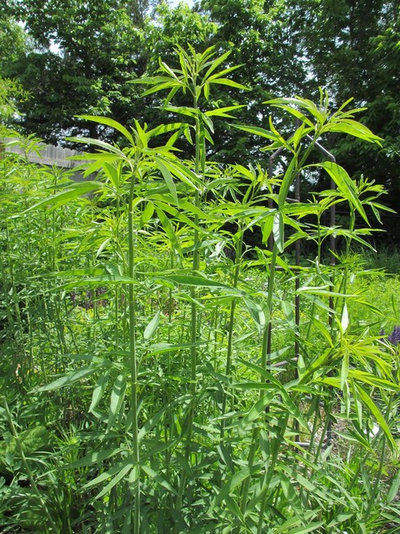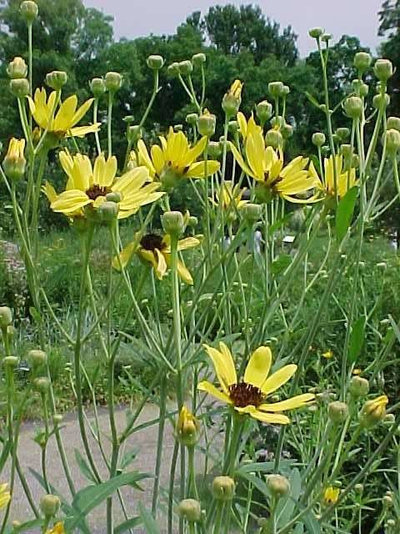Sometimes a garden that is filled with plants of similar heights, especially those lower than 3 feet, can become drab. Add flair with tall tickseed (
Coreopsis tripteris), a long-blooming, heat-loving, butterfly-calling skyscraper.

Benjamin Vogt / Monarch Gardens
Botanical name: Coreopsis tripterisCommon name: Tall tickseed, tall coreopsis
Origin: Native in areas from the central and southern Great Plains to the Southeast and central East Coast
USDA zones: 3 to 8 (find your zone)
Water and soil requirement: Sand, loam, clay; dry to moist soil
Light requirement: Full to partial sun
Mature size: 5 to 8 feet tall and 3 to 6 feet wide, or more
Benefits and tolerances: Easy perennial; drought tolerant; attracts native bees and butterflies
Seasonal interest: Good four-week bloom period in late summer and early fall; adds winter interest due to height; good bird perch
When to plant: Spring to fall

Benjamin Vogt / Monarch Gardens
Distinguishing traits. Tall tickseed grows up to 8 feet tall in ideal moist conditions, but even in dry soil it easily reaches 4 to 6 feet. Like its smaller cousins, tall tickseed puts out a long succession of cheery yellow flowers, and all in late summer when so much has already declined. Here you can also see the unique stalks and foliage that are almost tropical looking.

Missouri Botanical Garden
How to use it. Tall tickseed’s thin frame means it can slide in nicely among lower and denser plants for added interest. Put it in the middle or the back of a bed, or let it decide where it wants to slowly spread by rhizomes. The stems are fairly sturdy and will hold up to strong winds.
Planting notes. In moist soil tall tickseed can spread somewhat aggressively; it spreads much less in dry clay to sand. Nevertheless, it is very easy to pull out by hand if it creeps where you don’t want it. Tall tickseed is very adaptable and drought tolerant. Watch for butterflies that hang from its blooms in late summer.
More flowers to attract birds, bees and butterflies





